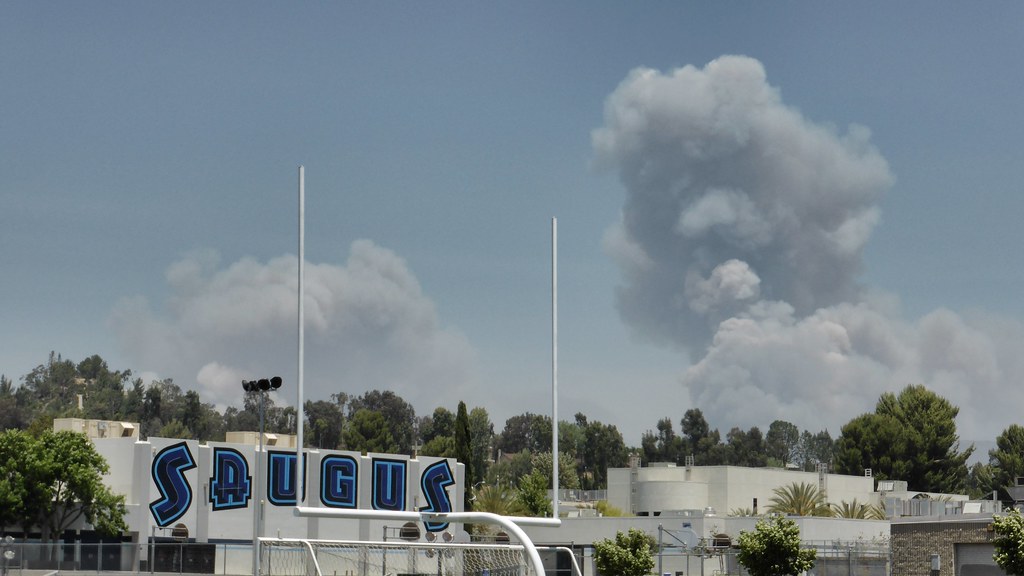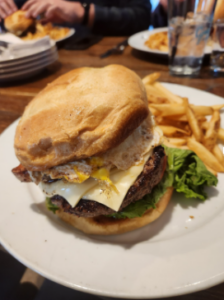“there was just something different about it from a simple drill to real life,”
-Andrei Mojica, A Saugus High School Student
A quick disclaimer: this article explores the topic of active shooter situations, while citing many real-life cases of such tragedies. All news articles linked contain similarly sensitive content. Readers with sensitivity to these topics should be aware of this disturbing content. Furthermore, as this article is categorized under ‘Opinion’; as such, the author will express her thoughts on the information presented.
The presence of gun violence is seemingly constant for my generation. It seems to me that mass shootings occur on a hauntingly regular basis in this country. It is particularly gut-wrenching when there is news of such a tragedy occurring at a school. Names like Sandy Hook, Marjory Stoneman Douglas, and Columbine immediately jump to mind. My ability to effortlessly rattle off multiple major school shootings is a testament to how familiar my generation has become with these tragedies. However, the likelihood that I might experience one such situation in own community is, realistically, very minute. Despite this, the threat feels pervasive; it is the looming cloud of its plausibility, no matter how unlikely, that I find disturbing.
Such concern was elevated to a fever-pitch with the recent Saugus High School shooting, which occurred in tandem with Bedford High School’s active shooter drill. Students participated in “Run, Hide, Fight” training in their classrooms during second block.
In an interview with the LA Times, Saugus High School student Andrei Mojica emphasized the vast difference between shooter drills and the real thing. He felt unprepared as him and his classmates were frozen in fear, the news of an active shooter on campus having just come to their attention. Mojica stated, “That fear made it feel like we were waiting in silence forever.” Almost everyone would agree, on principle, that a truly violent scenario is simply not comparable to a protected drill. But, there are vast implications to this seemingly obvious truth. It raises the question of how valuable exercises like Run, Hide, Fight really are to students. Bedford High School’s very own principal, Mr. Jozokos, speaks on the effectiveness of these drills:
“I think they can be effective if we do them often enough,” Mr. Jozokos states, “your brain needs to be able to go back to a place in order to not panic, I think, in a situation like that”. He emphasizes the importance of remaining calm in order to act swiftly in an emergency situation.
Students were not the only ones who had to undergo this process. All faculty members in school districts across New Hampshire participated in mandatory training; this consisted of an active shooter simulation conducted by local police. Bedford High School hosted one such exercise for faculty members in April. The officers acted as ‘the bad guys’ with Nerf guns, entering classrooms to accost the waiting teachers. Depending on their assigned room, faculty were able to run, hide, or fight – adding action and motion to those simple three words. They ran through a variety of situations: for example, what to do if a shooting happened while they were in the hallways. While describing the procedure in which he participated, Mr. Jozokos emphasizes:
“These (drills) are not fun for anyone. That’s not why we’re here.”
Mr. Jozokos then expands on police involvement in the process. The Bedford Police department not only lead the physical training, but also explained the utility of the Run, Hide, Fight procedure. Freshly hired teachers are now required to attend training conducted by the BPD as a newly-integrated facet of faculty orientation. The hours-long procedure served to prepare working faculty members, while also setting precedent for future training techniques. Mr. Jozokos states that faculty reception was overall positive:
“Emotionally, it’s not fun, and it’s scary, and it’s upsetting. And I got that feedback. And at the same time, the sort of rational part of people’s brains said this was well worth it.”
My emotional state during Bedford High School’s active shooter drill certainly accurately reflects Mr. Jozokos’s description of the faculty feedback. I felt that it was all extremely… dystopian. During my class’s debriefing period, my chemistry teacher spoke to a room full of my peers about how to most efficiently barricade a door, or which desks provided the best hiding places. As he went through all of these strategies, I felt distinctly uneasy. Do not skew my meaning here; I believe that the conversational period was beneficial, and the decision to put it in place tells me that Mr. Jozokos understands the cloud of unease this topic drapes over students. Even still, the stark transition from learning about cations to learning how best to evade gunshots is jarring. I agree with Mr. Jozokos’s sentiment that ultimately, these drills are worth it. However, there is a fundamental part of myself that is taken aback by the fact that these procedures are so necessary. It is, to me, a frightening prospect. As such, I am prodded to wonder how I would, realistically, react in such a petrifying situation: that is, if I would truly be able to abide by the protocol we are taught. Mr. Jozokos expresses similar thoughts:
“I’ve thought often what I would actually do, and it might not be to follow that protocol. I’m in charge of all of your safety, so I feel obligated to do something different, maybe.”
Even if the protocol may be discarded amidst the panic of an emergency situation, the amount of research that goes into forming the Run, Hide, Fight procedure must be recognized. Mr. Jozokos explains the training is based off of data analysis, curated over the years by studying police reports put out after shooting incidents. The foundation of this drill is well-researched, and Bedford High School is lucky to have a faculty that prioritizes student safety above all else. I do believe that Bedford is a safe place. But I also believe that Santa Clarita was considered a safe place – until it wasn’t. However, Mr. Jozokos a final pillar of hope for the safety and well being of our school community, by stating this:
“We are safe when we talk to each other. So that idea, see something say something (…) That’s how we stay safe.”
To divulge personal feelings, I would say that I do fear the possibility of an active shooter situation, despite its unlikelihood. I believe these are horrific events that have occurred far too many times in this country. The Washington Post and CNN have disturbing visual statistics on how many students have been killed in school shootings over the last decade or so. Mr. Jozokos seemingly understands this paranoia, referring to student anxiety as “constantly present” on this issue. The inclusion of teacher-facilitated conversation following the drill also speaks to his understanding of student concern. I think Mr. Jozokos would agree with me in saying that arousing panic is needless, and even dangerous. Therefore, it must be said: I do not think Bedford High School is in imminent danger. But, the ever-expanding list of names of children my age – or even younger – losing their lives in such a violent manner remains a deeply disturbing reality to me. I believe the presence of these shootings has left an open wound on the hearts of students growing up in the midst of it all.






Be First to Comment